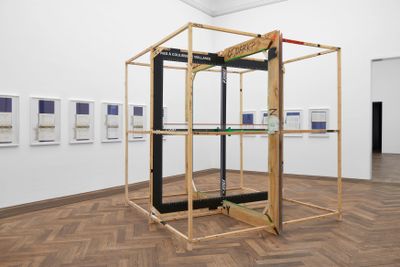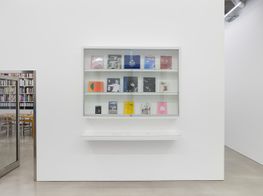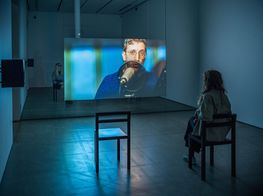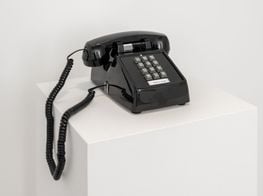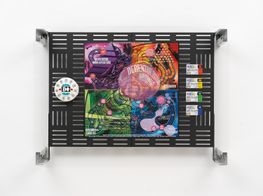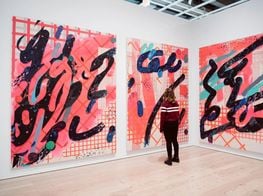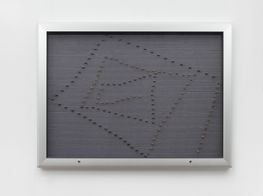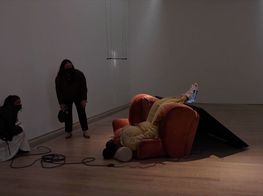Information (Today) at Kunsthalle Basel Revisits a 1970s Classic

Liu Chuang, Bitcoin Mining and Field Recordings of Ethnic Minorities (2018) (still). Courtesy the artist and Antenna Space, Shanghai.
Curated by Elena Filipovic, the group exhibition Information (Today) at Kunsthalle Basel (25 June–10 October 2021) and the Astrup Fearnley Museet (27 January–1 May 2022) re-envisions a legendary MoMA exhibition from 1970.
Describing the paradox of art and technology in an age of digital dualism, where life exists both online and off, Mckenzie Wark once said: 'Art is about rarity, about things that are unique and special and cannot be duplicated. And yet the technologies of our time are all about duplication, copies, about information that is not really special at all.'1
Fast forward to the past 18 months, and who would have imagined the debates that have arisen around art, the digital realm, and the possibilities for authentic experiences in the cybersphere. All evidenced by a proliferation of online exhibitions—from OVRs, augmented, and virtual reality environments—to blockchain and cryptoart making national news, and artists and celebrities all competing to make and sell non-fungible tokens (NFTs) on the same trading platforms.
However, conversations regarding art in the age of information do have historical precedents. Kynaston McShine, MoMA's curator from 1959 to 2008, organised an exhibition navigating the globalising potential of technology, titled Information, in 1970. At the time, McShine contextualised a period in which 'culture had been considerably altered by communications systems such as television and film, and by increased mobility.'2
Many of the around 150 artists, including Hans Haacke, Yayoi Kusama, and Bruce Nauman, went on to lead radical and transgressive artistic careers. The show also included iconic participatory artworks, such as John Giorno's Dial-a-Poem (1968), where visitors could call the number (212) 756-7032 from any telephone to hear narrated poems, which were changed on a daily basis.
Of course, our relationship to information has become much more complex, technologically sophisticated, and scaled up since the 1970s.
Fifty years since the age of mail, telegrams, and telex machines, this is the era of Google's search function, social media, artificial intelligence, mass surveillance, and facial recognition. But also of misinformation: algorithmic censorship, government secrecy, fake news, WikiLeaks, and QAnon conspiracies.
Information (Today) at Kunsthalle Basel presents a conscious range of artists who interrogate digital politics and consider the differing ways ecologies of information infiltrate our lives. In conversation with Ocula Magazine, Elena Filipovic observes how 'the way artists are dealing with information is so wildly different from one another.'
Postponed by a year due to Covid-19, Filipovic said that McShine's MoMA exhibition provided an apt 'temporal starting point', explaining that 'all of the included artists were born after 1970, growing up in the era between Information opening at MoMA and our present moment.'
The second curatorial criterion was that the show feature works in a variety of media—painting, sculpture, installation, and video—that depart from the aesthetic of, and now well-rehearsed conversations relating to Post-Internet Art. With this in mind, Filipovic was conscious to include artists one might not immediately consider in relation to art about information, as well as considering information beyond the digital.
For example, a work titled For the Otherwise Unaccounted (2020), by Turner Prize winner Lawrence Abu Hamdan, recently shown at London's Maureen Paley (9 December–9 May 2020) is also included.
Extensively researched in collaboration with scientists and theorists, the speculative project (culminating in interviews, thermographic prints, and texts) considers how birthmarks may themselves be carriers of information from past lives, that become visible in new bodies through reincarnation.
Describing Hamdan's theory, Filipovic elucidates how birthmarks might be markers 'of the violence perpetrated on the body that they were before, that had no way of having either recognition or retribution. For instance, in societies where there was a mass genocide, and they couldn't find justice, it might take the form of a birthmark upon the next body that it becomes.'
Staged across five rooms of the Kunsthalle, the show features an array of works by other pioneering early to mid-career artists, such as Gabriel Kuri, Sondra Perry, Laura Owens, Cameron Rowland, and Marguerite Humeau, in addition to new commissions by American Artist and Nora Turato, among others.
Simon Denny, one of the most well-known artists working adjacent to blockchain technology (as seen in a recent show at Petzel Gallery titled Mine, 18 March–15 May 2021) has been commissioned to produce a new NFT. While much attention has been drawn to the often illustrative, kitschy, and graphic qualities of these tradeable tokens, Denny's contribution is, unsurprisingly, more critical and subversive.
Denny worked closely with economist Moritz Schularick to produce an NFT whose 'image' is based on a chart comparing how housing inequality relates to more general inequalities in society. Offered for sale to accompany the show, the NFT is acknowledged on the checklist without any tangible physical manifestation.
All proceeds will be shared 50/50 between the Canton Basel-Stadt and Kunsthalle Basel, supporting the bricks-and-mortar institutions, but also the big 'state' that crypto-evangelists are often thought to disdain. For Denny, the gesture is less about philanthropy as it is is a provocative response to the habits and tenants of the crypto community.
Notably, unlike other recent institutional exhibitions operating in a hybrid phygital (physical and digital) format, Information (Today) emphasises sustained and inspective looking, for which embracing and understanding the materiality of the works—layers, scale, flaws, and tactility—is key.
This can be seen in the paintings and sculptures on view, such as Laura Owens's Untitled (2020)—a series of paintings that contain trompe l'oeil post-it notes and scrawls with phone numbers on them. The paintings are rigged to telephone devices, which receive questions and information sent via SMS, to which the paintings 'respond' with an answer. Meanwhile, trained graphic designer Nora Turato's your bed is a magical place where you remember all the things you forgot during the day / your vanity is powerful enough to defeat anything (2021) takes the form of a wall-sized mural made up of texts appropriated from the internet's fragmented metalanguage, such as everyday exchanges and social media messages.
Riddles (Jaws) (2017–2021), a monumental sculptural work by Marguerite Humeau, previously shown at the Schinkel Pavillon in Berlin (RIDDLES, 3 June–30 July 2017), consists of a V-shaped formation of glistening steel gates, appearing like an aggressive piece of civic architecture or an arrow of robotic birds in flight.
The idea originated from Humeau's research into what a sphinx might look like in the contemporary era, and how this mythological gatekeeping figure resembles the ambiguity of contemporary security protocols, which function to both protect and defend. Described by the artist as a 'sentient being', Riddles (Jaws) surveils visitors, each gate gleaning information from one's movements and communicating it to the others via radio signal, registering it in a closed circuit of communication.
Like Humeau's installation, a new commission by American Artist—most known for their purposefully ambiguous legal renaming so as to become hard to find—also considers surveillance.
Titled Veillance Caliper (Annotated) (2021), the newly commissioned large-scale sculpture, inspired by the writings of Simone Brown on the surveillance of black bodies, attempts to recreate the subjectivity and intangibility of surveillance itself. As Filipovic describes, the work will act as a seemingly 'irrational tool, because looking at it, you can't understand how it could possibly measure the oppressive, constant, and unmeasurable reality that is the surveillance of black bodies.'
Works such as these indicate how artists are using information as a medium in itself—converting intangible data into speculative objects, reminiscent of how big data platforms convert our internet participation and digital footprints into physical profit.
To quote McKenzie Wark describing this phenomenon in her book Sensoria: Thinkers for the Twenty-First Century (2020), 'it is not just that information became a commodity but that the commodity could now take the form of information itself.'3 —[O]
1 McKenzie Wark, 'Digital Provenance and the Artwork as Derivative', e-flux journal, November 2016, https://www.e-flux.com/journal/77/77374/digital-provenance-and-the-artwork-as-derivative/
2 Information, Edited by Kynaston L. McShine, MoMA (1970): p.1.
3 Mckenzie Wark, Sensoria: Thinkers for the Twenty-First Century, (Verso: London, 2020): p.20
–


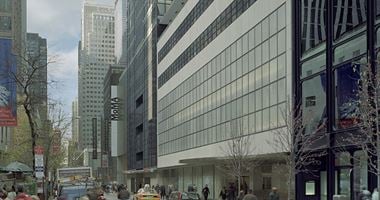
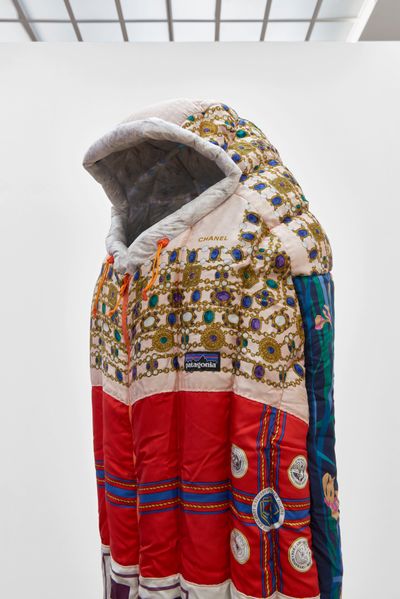



![Gabriel Kuri, Balance of the Invisible and the Foreseeable (2014) (front); Laura Owens, Untitled [SMS +41 79 807 86 92] (2021) (left); Laura Owens, Untitled [SMS +41 79 807 86 29] (2021) (right). Exhibition view: Information (Today)](https://files.ocula.com/anzax/Content/Reports/2021/Information%20Today/information-2_400_0.jpg)

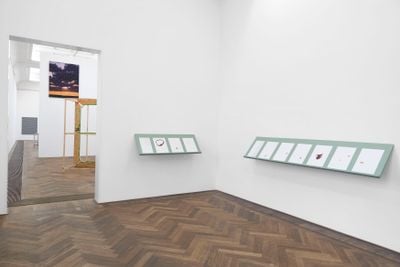
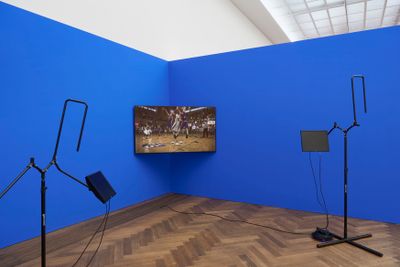
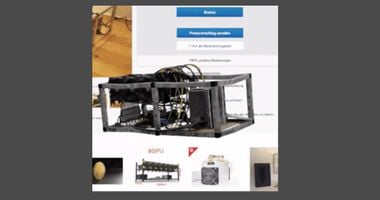
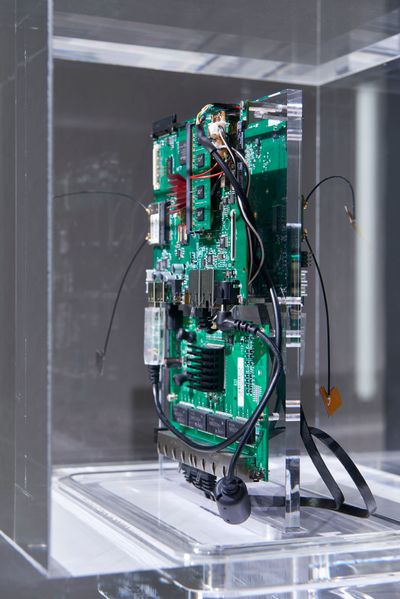

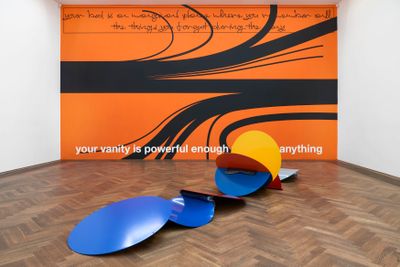
![Marguerite Humeau, Riddles (Jaws) (2017–2021) (front) and Laura Owens, Untitled [SMS +41 79 807 86 34] (2021) (back). Exhibition view: Information (Today), Kunsthalle Basel, Basel (25 June–10 October 2021).](https://files.ocula.com/anzax/Content/Reports/2021/Information%20Today/information_400_0.jpg)
